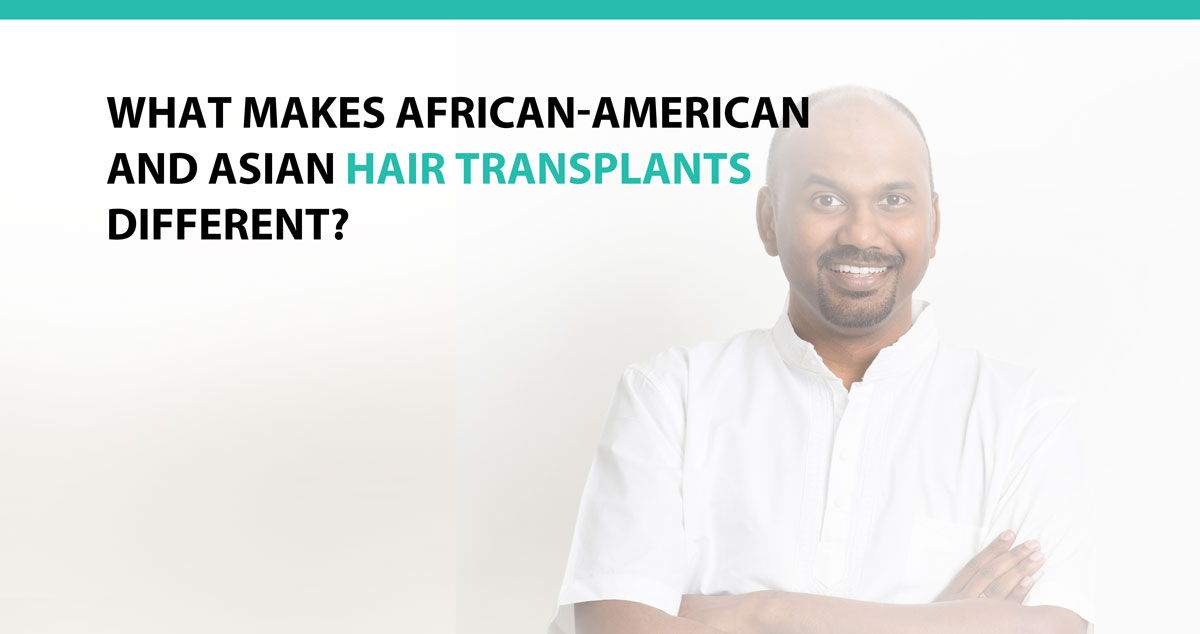
If you suffer from hair loss, you can effectively reverse the effects with the help of hair transplant procedures. However, different ethnic backgrounds play a huge role in determining the technique used as well as the results of the hair transplant. Normally, hair restoration experts categorize hair into four main types; Caucasian hair, African-American hair, Asian Hair, and Middle-Eastern hair.
Each of these hair types has distinct categories that influence hair transplant procedures. African-American hair is usually curly while Asian hair is largely straight. As such, there are differences when it comes to hair transplants for both Asian hair and African-American hair. Read on to find out what makes the two hair transplants unique.
- Hair Density
Hair density in the donor area plays a significant role in the success and results of a hair transplant. African-Americans generally have lower hair density compared to Caucasian patients. This means a lower number of hair strands on the head, which makes hair loss easily noticeable. While African-American hair is characterized by low density, the hair tends to be curlier or kinky, which compensates for the low density to provide adequate coverage to the balding areas with few follicular units.
Asian hair on the other hand has the lowest density which may result in inadequate follicular units in the donor areas for transplantation. Therefore, if the procedure is not conducted by a trained hair restoration expert, it may be easy to notice unnatural or thin hair transplant results.
- Scarring
African-American hair transplants are more likely to result in scarring of the scalp tissue as they are more predisposed to keloid formation. Although anyone can suffer from keloids, African-American patients are more prone to this type of scarring as it mostly affects dark-skinned individuals. Keloids are usually thought to run in families and form when there is an extra growth of scar tissue as the body tries to heal from injury.
While scarring may occur following Asian hair transplants, keloids are not as common in patients of Asian origin. They may however suffer from hypertrophic scars. Due to this, surgeons prefer Follicular Unit Extraction technique as it is less aggressive compared to Follicular Unit Transplantation. If you have a family history of keloids, your doctor will perform a few tests to establish how your body will react to a hair transplant. You will also be given medication to minimize scarring on your scalp.
- The Shape of Hair Follicles
The hair follicles of African-American individuals are usually curled, which makes extraction much more complex. Given the shape of the hair, African-American hair transplants require punches with larger diameters to accommodate the curly nature of the hair follicles. Also, since the curly hair follicles make it hard for individual hairs to be extracted and transplanted without damage, FUT is the ideal method as it only involves transplanting hair follicles in groups.
Asian hair transplants on the other hand are best done using the FUE method. This is because Asian hair is naturally straight, making it easy to extract and transplant individual hairs. What’s more, Asian hair follicles usually grow parallel to the scalp and form a blunt hairline. Therefore, utmost care is needed when choosing the angle and location of every shaft as any mistake is easily noticeable due to the sharp contrast that exists between Asian skin and Asian hair.
Get Expert Hair Restoration from Advanced Medical Hair Institute
Regardless of the obvious differences in African-American hair and Asian hair proper diagnosis is necessary to establish the cause of hair loss as well as the best technique to transplant hair with consideration to the above factors. This way, you can restore hair without the fear of looking unnatural or scarring. If you are looking for reliable hair loss solutions, Dr. Williams can effectively perform hair transplant procedures whether you are of African-American or Asian origin. Contact us today to discuss your hair restoration options.










